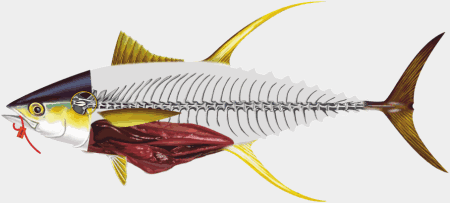Collecting samples of Pacific pelagic species to understand their biology and ecology
Since 2001, SPC’s Oceanic Fisheries Programme (OFP) has been coordinating the collection of biological samples of pelagic species from all over the Pacific Islands region on behalf of its member countries.
Initially, this collection was focused on stomach, muscle and liver samples to understand the trophic structure of the pelagic ecosystem (i.e. who eats who, where, and when); however, this has expanded to include gonads (reproductive organs), otoliths (ear bones), spines and blood, giving the opportunity to study reproduction, age, growth and contaminant concentrations.
The collection is ongoing thanks to the partnership with the fisheries observer programmes operating in the western and central Pacific Ocean (WCPO).

A group of experienced senior “at sea” observers and port samplers participate by collecting samples from each trip or unloading they participate in. Rather than collect numerous samples from a single trip or unloading, they collect samples from a small number of individuals from each sampling session. This ensures that the sampling activity does not take too much time and that many more fishing trips and vessel unloadings are sampled to achieve OFP’s collection targets.
OFP aims to have approximately 2,000 fish sampled for each species in order to allow Pacific-wide studies to be undertaken. The ongoing status of the collection means that as some samples are withdrawn from the collection for scientific analyses others are deposited to maintain the collection for future analyses. The collection is also supplemented by scientific surveys that are undertaken by SPC and other organisations.
Presently, sampling activities are coordinated in the Philippines, Palau, Papua New Guinea, Solomon Islands, Federated States of Micronesia, New Caledonia, Vanuatu, Fiji, Marshall Islands, Kiribati, Samoa French Polynesia and Japan.
